This Wednesday, we welcome Juliana Marulanda who is a firm believer that “you can’t scale chaos.” Join us, as we unpick how best to stop the plateauing of your business…
About Juliana Marulanda
With over 19 years of experience across Wall Street, the nonprofit sector, technology startups, and family-owned businesses, Juliana Marulanda, founder at ScaleTime, has served over 300 digital agencies. Featured by Forbes and Entrepreneur, Juliana turns uplevel businesses into lean, mean, profitable machines. On average, she and her team create ways to free up at least 30 hours per week for her clients so they can have successful agencies that run without them. Founders can find themselves saying “I do what I want, how I want, whenever I want.” Now that is freedom.
Juliana is passionate about providing audiences with invaluable tools that they can use instantly to start improving their business. Her wealth of agency growth secrets and expertise in growth management will put agency owners and marketers on the path to scaling a business.
Having favored rabbit holes instead of hobbies, Juliana knows much of those personality traits are totally ADHD. Therefore, you will find her with a new obsession every 3-6 weeks… from all textures to making whiteboards, travel hacks, biohacking, Korean skincare…
Points of Interest…
- Business Plateau and How it happens 3:32
- Why $1.3Million is a Common Plateau 5:06
- Getting Through the First Plateau 8:48
- Defining Mature Process to Negate Business Plateau 13:59
- Potential Post $3M Plateau Pitfalls 21:56
Business Plateau and How it Happens
In short, Juliana’s whole jam is focussing on systems and processes for agencies (namely in the six, seven, and eight-figure realm) while advocating for owner freedom. I mean, who doesn’t want to spend more time on the growth of their business and with their family?!
Before we get to that, however, I’m keen to define the brick walls Juliana usually sees clients run into as they transition from six-to-seven figures, or seven to eight-figures. How best could one describe those plateaus and what they look like?
“There’s a dash to the coveted first million. And what I have found with so many people that come to us over at ScaleTime is that there’s a stuckness around $1.3million. When I talk about this it’s funny, because it resonates with so many; you get to that million and learn to sustain it – and then you plateau. There are a couple of reasons why this happens…”
Firstly, drive will only get you so far, you also need a vision to sustain growth. Additionally, you need to see the rewards in order to instill the motivation required. By way of context; Juliana points out that the take-home from $250-300k to a million isn’t massively different, therefore strategic vision/end goal is imperative. Otherwise, you’ll be asking yourself all kinds of questions…
“You’re working harder, you’re employing people, and you have more headaches. Your sanity is questionable and you’re not making much more money. So, naturally, you’re like, what the f**k?!”
Why $1.3Million is a Common Plateau
Why is $1.3million such a common benchmark for this to happen? Again, there are a number of reasons why; usually, you’ve delegated your execution at this point, so you’re mostly dealing with collaboration. This is where things need to get more streamlined – especially if you’ve not got one eye constantly trained on profit, and “process” is still somewhat of an alien concept. Even if you do have some key processes in place, but they need revision.
“We get a lot of people who are like, ‘Oh man, you know, I’ve read the Checklist Manifesto and I’m a convert.’ They have their checklist, which convinces them that their tech stack is on point. While that might be the case, can they be sure they’re optimizing it sufficiently? In otherwords, they’re in a world of ‘ish’ – they kindish have a handle on things.”
So. the first thing you need to do is standardize your systems and have a clear vision of what the end goal is in order to standardize efficiently and ensure everyone on your team isn’t an island. With a decent team and a talented business visionary that can sell, reaching said goal is doable. However, can you do it in a way that’s profitable and scaleable? How can you make success repeatable?
One could say that once you manage to hit the $3million mark you’ve figured out how to make things repeatable. However, that’s when the sands shift again… now, you need a management team. Think about it; your business needs someone to execute the account management and others to put out all the fires you’d ordinarily have to manage.
In short, at this point, what we see is we’ve got really great teams, but the owner is still the biggest point of failure *** We expand further on this from 7:20 minutes***
Getting Through that First Plateau
Starting at the first transition – from being an expert with some helpers into a fully-fledged business (right around that $1.3 million mark), then building a team, having that function become standardized – what is the next rung in the ladder that you need to solve to surpass the $3million mark?
“You’re going from offloading tasks and projects to offloading outcomes and results. Technology is really important here because it creates accountability, visibility, measurability, and then coveted repeatability.”
That said, you can have all the tools in the world at your disposal, however, are they being used in a standardized way? It’s not just about having the tech, you need to be able to communicate it cross-functionally in order to achieve actual progress. On the one side, you don’t want to be dinged and pinged every second, so you need to create a collaborative approach and thus productive structure within your specific organization.
For instance; within your organization, are there agendas for team meetings? What are we doing in team meetings? Are team meetings actionable? Could this be an email?! On the flip side, you could find that team meetings are pivotal to building a positive work culture and thus progress. Either way, in order to grow, you need to address certain elephants in the room, such as…
“How are you using your systems and how are they communicating with each other? If you have project management, are you using templates? Are there checklists for that? Can people track? Do we have dashboards that enable us to zoom out and then zoom in when an issue arises, as opposed to going line item by line item? Because NO ONE has time for that!”
Don’t worry. You are not alone with your whiteboard separation anxiety. And you can still keep it, but you need to expand beyond it in order to expand your business ***Juliana and I delve into bringing structure to data and deliverables from 11:23 minutes***
Side note: if you’ve got a process for how you go about defining your scopes for projects, it’s best that you install a regular cadence to review and tweak these numbers based on past performance as time goes on. The Agency Profit Toolkit is a free resource that has meeting templates that you could directly apply to this, among other goodies. Grab your copy below!
Defining Mature Process to Negate Business Plateau
Juliana mentioned process, so of course, I’m going to seize the opportunity to talk about my favorite subject. One of the traps folks fall into at this stage is getting bogged down in new aspects of the business that they’re not entirely familiar with. This can lead to over-documentation. So, I want to ask Juliana about the risk of over-documentation and how to identify a good mature process while navigating obscurity when it comes to documenting new things.
“There’s a couple of things; the first being the adage Progress Over Perfection – especially for the creative types who want to make things perfect. There is no perfect, though, something is going to change, be it a client doing something that drives you nuts, or the algorithm going through another phase. Therefore, you need to become comfortable with the fact that processes are always iterative.”
OK, so how do you mitigate this? By following the following sequence of Creating, Standardizing, and then Optimizing. Essentially, the name of the game is getting things standardized so then you can continuously optimize as a group. Until you hire a new person who could shed a pivotal new perspective on how to optimize. And there are methodologies to aid that process.
“Not to get too project managerial on it, but there’s a difference between Waterfall and Agile. If you have processes that are pretty set in, you’re making bank on them, they work, and you can track and train on them – then that’s the stuff you templatize and optimize…”
Then there’s stuff that you’re considering doing as a service offering, or branching out into another facet. There’s this skeletal idea and no one, even you, knows what the hell they’re talking about. And that’s OK. There are steps to get you all there. For example, Juliana says…
“What I would say to that is build it like an Agile process, right? Think about it in Sprints, and make sure that you’re doing quick check-ins along the way to grow your idea. Provide visual examples of what you’re thinking.”
Once you can show your team what ‘done’ looks like via other examples, that helps. However, if you’re creating something COMPLETELY new, then phase it out. And start with phase one – the Thinking Phase! ***We dig into this more from 17:08 minutes***
Potential Post $3M Plateau Pitfalls: Decision-Making
To recap; you transition through the first plateau, to then breakthrough to around that 3 million mark. At this point, this is the time at which usually when we introduce first level of management. What are the obstacles that people run into at that stage and how do we break through them?
Well, usually, you’ll hiring managers from larger companies, who won’t necessarily understand what it’s like to run a small business and the accompanying wallet limitations. These new managers will need to learn how to make the best decisions based on quality and having complete oversight, the same way you would. This is where things tend to start getting glitchy because now you need systems and processes for mangement and decision-making.
Welcome to the wonderful world of decision-making processes! Understandably, this stage can be tricky to conceptualize as you’ve never done it before. Even for those who have undertaken it before, it’s still not an easy thing to do. Think about it… you need to document your process for making a decision without them becoming a mystic mindreader. Thankfully, it’s not has hard as it could be if you think about it logically.
You just have to go through the process of actually slowing down, and writing a list of common decisions that you need to make when you’re wearing certain hat. Then, how do you then go about getting that into somebody else’s mind? Or documenting it in such a way that it can be scaled beyond just what happens in your brain?
“Every decision is literally a Decision Tree that just happens in your brain, right? So you can download that Decision Tree. Let’s say you have three tiers of clients; so when something happens, define what tier type of client it is. If something is out of scope, decipher your budget for delighting your client, as opposed to your budget for requiring a change order. “
***Juliana and I do a serious deep dive into the facets of managerial decision-making and the criteria for your Decision Tree from 24:23***
Key Takeaway…
Just being able to standardize and centralize how your information is being used as an organization is a huge win. Also, Juliana is a huge advocate for Dirty Drafts…
“Get it done, get it dirty, put it out there. Then, get feedback from clients, from the team, and really allow progress to beat perfectionism.”
See more from Juliana…
- LinkedIn /in/JulianaMarulanda
- Facebook /ScaleTime
- Youtube /ScaleTime
- ScaleTime Podcast
- ScaleTime’s 5-Minute Diagnostic
Did you learn anything new from this episode? Let us know in the comments below! We have helpful blogs designed to bolster your agency profitability, such as How To Calculate Your Billable Employee Cost-Per-Hour.
Our next installment of #APP, on November 2nd, will see Marcel chat with Lindsey Groepper of BLASTmedia. Our previous blog – Episode 97 with Tatiyana Cure – can be viewed here…
Avid #APP Listener?!
We would be eternally grateful if you could leave us a review…
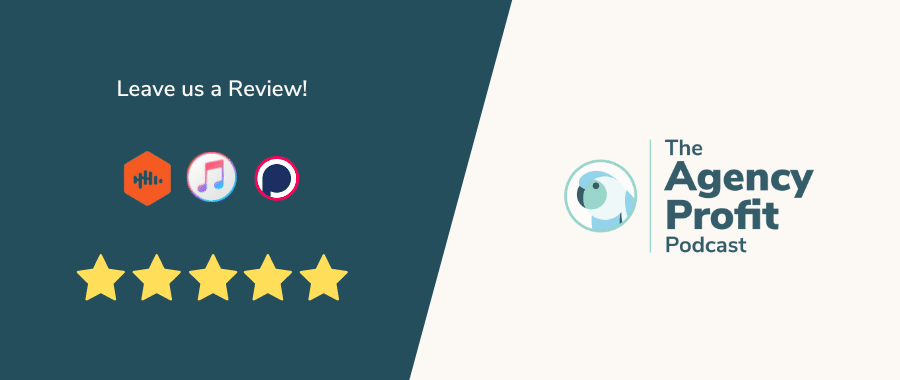
Agency Profitability Tool Kit
If you’re looking for more resources to help you improve your agency’s profitability, check out the Agency Profitability Tool Kit. It’s full of templates and checklists used when consulting clients. This helps them improve profitability by over 100% in under 60 days.
Fill out the form below for your copy!

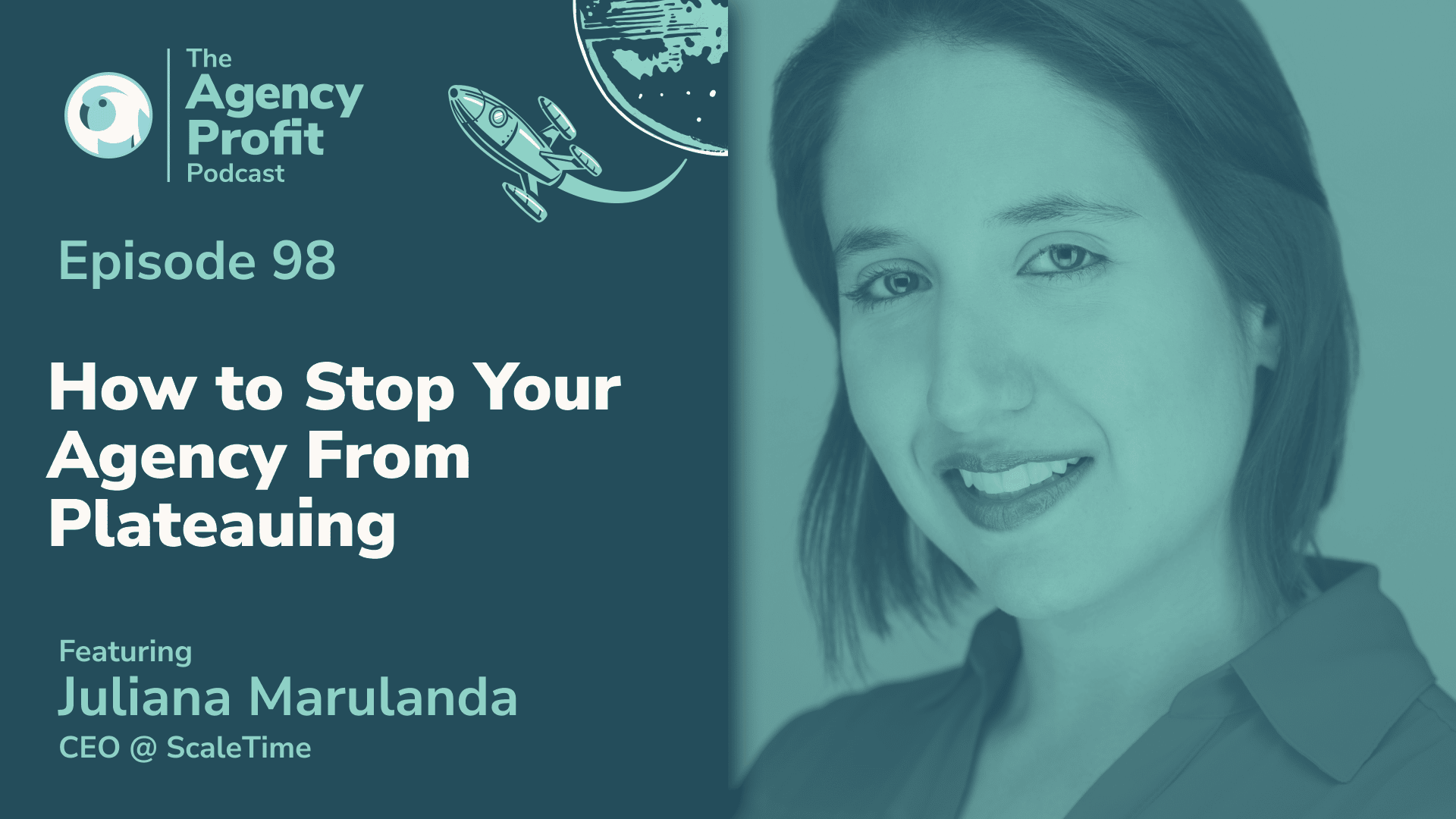


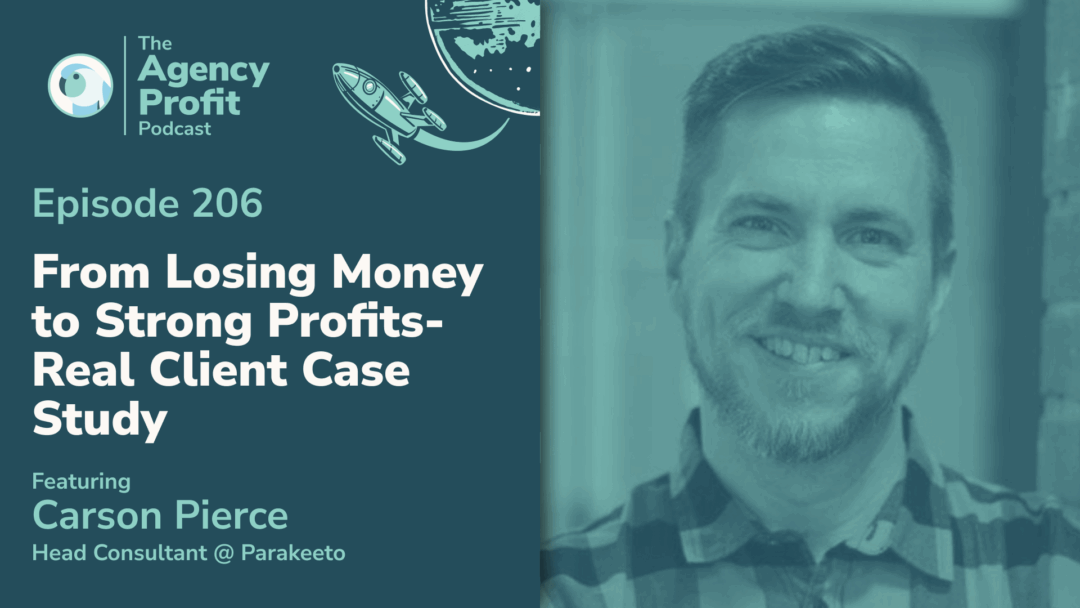
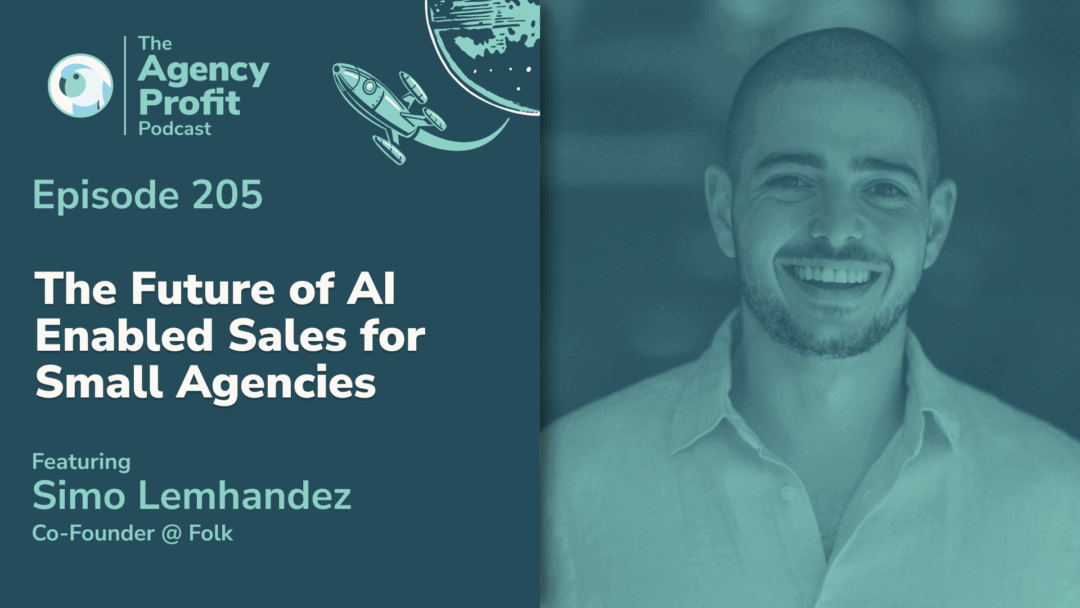
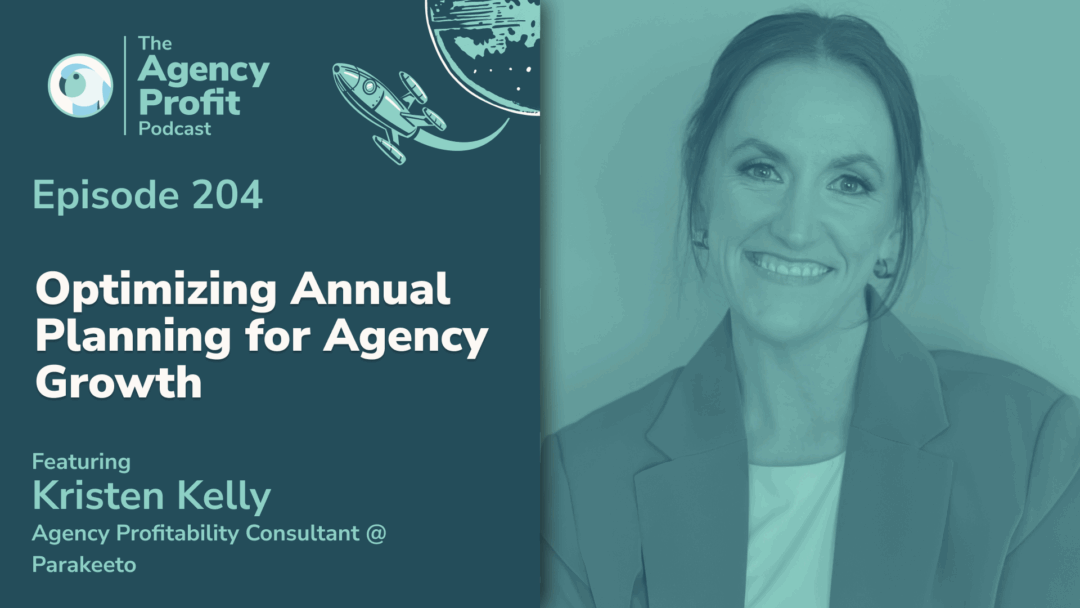

0 Comments